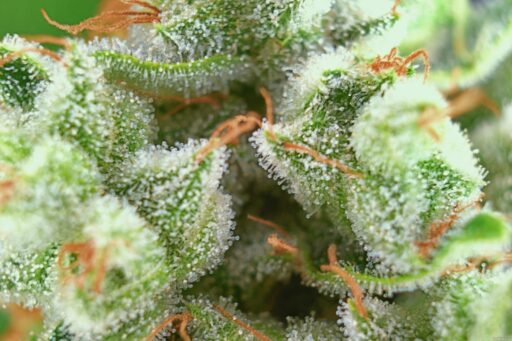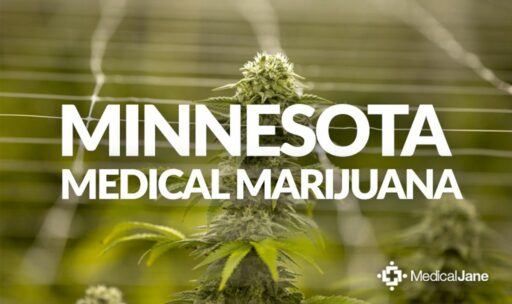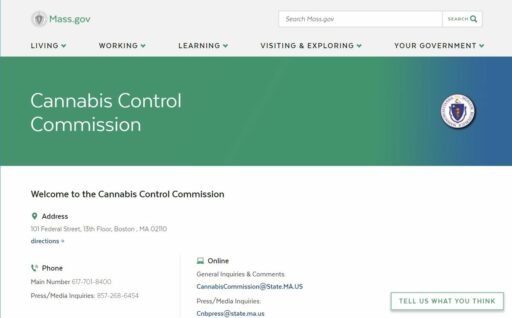The debate surrounding the legalization of medical marijuana is multifaceted, touching on legal, medical, and societal issues. This article delves into the various reasons why medical marijuana should be granted legal status, with a focus on its health benefits. We explore the therapeutic applications of cannabis, the complex legal landscape, public health considerations, societal implications, and the challenges faced in research and future directions.
Key Takeaways
- Systematic reviews and meta-analyses provide substantial evidence for the efficacy of cannabis in treating chronic pain and epilepsy.
- The legal landscape of medical marijuana is fragmented, with state-by-state variations creating challenges for reciprocity and healthcare provider regulations.
- Medical marijuana has been associated with reduced opioid consumption and improved quality of life, distinguishing its use from recreational purposes.
- Public perception is shifting towards acceptance of medical cannabis, influenced by advocacy and the need to address misconceptions.
- Research on medical marijuana is hindered by its Schedule I classification, and there is a call for evidence-based regulations to support its therapeutic potential.
Understanding the Therapeutic Applications of Cannabis

Evidence from Systematic Reviews and Meta-Analyses
The quest for quality evidence in the realm of medical cannabis is paramount. Systematic reviews and meta-analyses provide a high level of evidence by synthesizing data from multiple studies, offering a more comprehensive understanding of cannabis’s therapeutic effects. Tools like the CED Library of Cannabis Literature and AI chatbots are invaluable for accessing such trusted sources.
It’s crucial to rely on top-notch scientific evidence like randomized controlled trials, meta-analyses, and peer-reviewed journals to inform medical practice and policy.
Recent findings from these rigorous studies have begun to outline the potential benefits and risks associated with medical marijuana use. For instance, observational evidence from oncology research suggests nuanced outcomes in drug efficacy and safety. Similarly, in the field of public health, patterns in opioid prescribing and the effectiveness of various diets have been scrutinized, revealing a complex landscape of health interventions.
| Health Topic | Evidence Linkage | Implication |
|---|---|---|
| Opioid Prescribing Patterns | Vastly differing | Indicates need for standardized guidelines |
| Diet and Coronary Heart Disease | Lower risk with vegetarian/pescetarian diets | Supports dietary interventions |
| Social Prescribing Health Policy | Very limited evidence | Calls for more robust research |
These insights underscore the importance of a balanced view, especially in an evolving field like cannabis research, where selective reporting can skew public perception and policy.
Chronic Pain Management and Cannabis
Chronic pain is an issue affecting roughly 20% of the global population, posing significant challenges to both patients and healthcare systems. Traditional pain management often relies on opioids, which, while effective, come with a high risk of addiction and other adverse side effects.
Cannabis, particularly the psychoactive component THC, has emerged as a potential alternative for pain relief. THC’s interaction with the endocannabinoid system, through the activation of CB1 and CB2 receptors, suggests a promising avenue for managing pain without the same level of risk associated with opioids.
The opportunity to address the opioid epidemic through cannabis is underscored by studies indicating a reduction in opioid consumption among patients using medicinal cannabis. This shift not only highlights the therapeutic potential of cannabis but also the need for continued research and development of prescribing guidelines.
However, the integration of cannabis into medical practice is not without its challenges. It requires a careful balance of dosing, legal considerations, and patient education to ensure safe and effective treatment outcomes.
Cannabis in the Treatment of Epilepsy
The exploration of cannabis as a treatment for epilepsy has gained significant attention, particularly for those with forms of the condition that are resistant to traditional medications. A growing body of evidence suggests a potential for cannabinoids in reducing seizure frequency and severity, especially with the introduction of CBD-based treatments.
-
Potential Benefits:
- Reduction in seizure frequency
- Decrease in seizure severity
- Alternative for treatment-resistant epilepsy
-
Challenges:
- Determining optimal dosing
- Understanding long-term effects
- Potential drug interactions
The chemical nature of cannabis and the complexity of epilepsy make this an area ripe for research, yet fraught with challenges. Clinicians are often in a difficult position, balancing the anecdotal success stories against the need for more empirical evidence.
While the potential is promising, the journey to fully understand and integrate cannabis into epilepsy treatment protocols is ongoing. Rigorous, controlled trials are essential to establish the safety and efficacy of these treatments, and to address the myriad of questions surrounding optimal dosing, long-term effects, and interactions with other medications.
Navigating the Legal Landscape of Medical Marijuana

State-by-State Variations in Medical Marijuana Laws
The legal status of medical marijuana in the United States is a complex tapestry, with each state weaving its own set of rules and regulations. The inconsistency across states complicates matters for physicians and patients alike, leading to a landscape that is difficult to navigate without a comprehensive understanding of varying laws. For instance, the types of cannabis products permitted, the potency of these products, and the list of qualifying conditions can differ significantly from one state to another.
The possibility of using a medical marijuana card across state lines is a topic of both hope and complexity. While some states offer reciprocity, allowing cardholders from other states to access their medical marijuana programs, this is not a universal practice. Patients must be acutely aware of the limitations imposed when they travel, which can result in emotional and mental strain for those seeking effective treatments.
The ultimate message here is that medical marijuana card reciprocity is not universal. Understanding the intricate fabric of legal frameworks is almost as essential as understanding the drug’s effects.
To stay informed, many turn to resources like the interactive map provided by DISA, which offers up-to-date information on legalization, medical use, and recreational use across the states. This tool is invaluable for patients and healthcare providers who must keep abreast of the ever-changing legal landscape.
The Challenges of Medical Marijuana Card Reciprocity
The concept of medical marijuana card reciprocity has become a focal point of discussion among patients and healthcare providers. Reciprocity refers to the ability of one state to recognize and accept a medical marijuana card issued by another. However, this is not a universal practice and varies significantly from state to state.
The ultimate message here is that medical marijuana card reciprocity is not a straightforward solution; it’s a nuanced, state-dependent issue.
For patients, this lack of uniformity can lead to confusion and inconvenience, especially when traveling. States that do offer reciprocity may have specific conditions and stipulations that must be met, which can include residency requirements or limitations on the types of medical conditions that are eligible for treatment with cannabis.
- State-dependent reciprocity: Not all states recognize out-of-state medical marijuana cards.
- Conditions and stipulations: States with reciprocity may impose specific requirements.
- Residency requirements: Some states require patients to be residents to apply for or use a medical marijuana card.
- Eligible medical conditions: There may be restrictions on the medical conditions that qualify for treatment.
The inconsistencies in state policies not only create hurdles in standardizing care but also in the ability of patients to maintain continuity in their treatment when crossing state lines. The road ahead for medical marijuana card reciprocity is paved with both challenges and potential, as the clinical and legal landscapes continue to evolve.
Regulatory Hurdles for Healthcare Providers
Healthcare providers face a complex regulatory environment when it comes to medical marijuana. Developing consistent, evidence-based regulations is crucial for ensuring safe and equitable access to this treatment option. Engaging with stakeholders, including healthcare providers, researchers, policymakers, and patients, is essential to create a regulatory framework that supports responsible use.
The exploration of cannabinoids as an alternative to opioids for pain management is a multifaceted issue that requires a nuanced approach. By considering various perspectives and the latest scientific evidence, we can navigate these regulatory challenges effectively.
Additional obstacles healthcare providers must navigate include denial of access to bankruptcy and trademark protections, and complications with delivery to customers residing in federal housing or receiving federal housing support. The need for better alignment between regulatory and reimbursement processes is also underscored, particularly for drugs approved through expedited pathways.
Some believe that new regulations will mitigate complications from various lawsuits, including those brought by medical marijuana sellers and disabled veterans. These groups claim that the rollout of regulations was in contravention of the enabling law’s language. As the Feds examine loosening restrictions on marijuana for medical use and research, the hope is that this will lead to a more accessible and less cumbersome system for healthcare providers.
Medical Marijuana and Public Health Perspectives

Impact on Opioid Consumption and Quality of Life
The intersection of medical marijuana and opioid use is a critical area of study, particularly as the opioid crisis continues to affect public health. Some evidence suggests that cannabis may potentiate the antinociceptive effects of opioids, which permits lower and presumably safer opioid dosing to achieve desired pain relief. This synergy could be a turning point in pain management, offering a safer alternative to traditional opioids.
From a public health perspective, the shift from opioids to cannabinoids is significant. Studies indicate that cannabinoids often present fewer side effects than traditional substances like opioids and barbiturates. This change not only affects medical practice but also has broader implications for workplace policies and legal frameworks.
The potential for medical cannabis to improve quality of life extends beyond pain management. Patients with various conditions report improvements in sleep, appetite, and overall well-being when using cannabis therapeutically.
The integration of cannabinoids into medical practice is not without challenges. It requires careful consideration of dosing, legal regulations, and patient education. As research progresses, developing prescribing guidelines will be essential to ensure safe and effective treatment for patients.
Medical Marijuana Use Versus Recreational: Drawing the Line
The distinction between medical cannabis and recreational weed is more than just a legal classification; it reflects different intentions and uses. Medical marijuana, prescribed by healthcare professionals, is tailored to treat specific medical conditions and symptoms. Recreational use, on the other hand, is primarily for enjoyment and relaxation.
- Medical marijuana often requires a card or certification, emphasizing its therapeutic role.
- Recreational cannabis is accessed more freely, but may lack the quality control and dosing precision critical for medical use.
Skeptics often regard medical marijuana cards as mere gateways to recreational use, overlooking the evidence of medical efficacy. The challenge lies in maintaining the integrity of medical marijuana programs while preventing misuse.
As the legal landscape evolves, it’s crucial for patients, healthcare providers, and lawmakers to understand and respect the boundaries between these two uses. This ensures that patients can access the treatments they need without stigma or legal barriers, while recreational use remains a separate and distinct matter.
Workplace Safety and Medical Marijuana Legalization
As workplace drug tests reveal marijuana positivity rates at a 25-year high, companies face a complex interplay between employee health, legal liabilities, and safety concerns. The challenge lies in balancing the rights of employees using medical marijuana against the need for a safe work environment.
- Some companies are reevaluating their approach to marijuana screening, considering the therapeutic benefits of cannabis.
- Debates around safety and legal liabilities persist, with a focus on ensuring that employees are not impaired while on the job.
- Specific articulable symptoms of cannabis impairment are crucial in maintaining workplace safety in accordance with state and federal laws.
The surge in workplace marijuana positivity is not an isolated phenomenon but reflects evolving perspectives on cannabis, influenced by medical research, cultural shifts, and individual experiences.
This change has implications for legal frameworks, workplace policies, and healthcare practices, necessitating a nuanced approach to drug testing and employee wellness programs.
The Societal Implications of Medical Marijuana Legalization

Shifting Public Perception and Policy
The public perception of medical marijuana has undergone a significant transformation, moving from a stage in scientific debates to a more mainstream topic. This shift is evident in political platforms and even casual conversations, reflecting a broader acceptance and curiosity about cannabis’s therapeutic potential.
The media plays a pivotal role in this transformation. With the rise of social media influencers and marijuana news websites, the line between anecdotal evidence and scientific fact often blurs. It’s crucial to distinguish between the two, especially when recent posts cover marijuana laws in various states, influencing public opinion and policy.
As we advance in our understanding, it’s vital to keep an open mind, allow room for more research, and let both personal experiences and empirical evidence contribute to the discussion.
The evolving narrative around medical marijuana beckons us to participate, question, and most importantly, stay informed. The media’s role in scientific discourse is critical, as journalists guide public discourse and shape the direction of health and science policy.
The Role of Advocacy in Medical Cannabis Acceptance
Advocacy plays a pivotal role in the journey towards the acceptance of medical cannabis. The stories of individuals who have experienced the benefits of medical cannabis are powerful catalysts for change. These personal narratives not only illuminate the potential therapeutic effects but also help to humanize the issue, fostering greater empathy and understanding within the broader community.
Engagement from both experienced users and healthcare professionals is crucial. A Family Physician specializing in medical cannabis patient care shared that the spectrum of benefits observed in patients is remarkable, ranging from relief from chronic pain to improved mental health. This firsthand testimony is invaluable in shaping public opinion and policy.
The harmonization of cannabis industry regulation is essential for safe and equitable access to medical cannabis therapies.
As we strive for harmonized regulations, the role of organizations like ACIL is to provide science-based information to stakeholders. This objective guidance is a cornerstone in building a regulatory framework that supports patient needs while ensuring safety and compliance.
Addressing Misconceptions and Skepticism
The journey towards the acceptance of medical marijuana is often hindered by persistent misconceptions and skepticism. Despite the legal distribution of substances like tobacco, alcohol, and opioid painkillers, cannabis faces unique challenges in gaining widespread acceptance. This is partly due to fears about its psychoactive effects, potential for abuse, and the perceived lack of regulation.
To combat these misconceptions, clear and evidence-based communication is essential. It’s important to highlight the substantial body of evidence that supports the medical efficacy of cannabis, which is often overshadowed by the skeptical outlook on medical marijuana cards. Skeptics may view these cards as gateways to recreational use rather than legitimate access to necessary treatment.
The fragmented legal landscape contributes to the confusion and fuels skepticism. Addressing these concerns requires a concerted effort from lawmakers, healthcare providers, and the community to ensure that the therapeutic benefits of cannabis are understood and appropriately regulated.
Educating the public and healthcare professionals about the therapeutic applications and regulatory frameworks can help dispel myths and build trust in the system. It’s a collective responsibility to foster an environment where informed decisions are made, and where the potential of cannabis for medical purposes is recognized and utilized responsibly.
Research Challenges and Future Directions in Medical Cannabis

Barriers to Conducting Robust Cannabis Research
The pursuit of robust cannabis research is fraught with challenges. The classification of marijuana as a Schedule I substance is a significant impediment, as it denotes a high risk for abuse and no accepted medical use, making scientific inquiry difficult. This legal status restricts researchers’ access to quality cannabis material and limits the scope of potential studies.
Another major barrier is the reliance on self-reported data and observational studies, which often do not account for the patient’s environmental, socioeconomic, and medical background. Such studies are less reliable and can lead to skewed results. The need for high-quality evidence, such as randomized controlled trials and peer-reviewed studies, is paramount to overcome the half-baked attitude prevalent in current research.
- Historical inequity and institutional power dynamics
- Lack of diversity and inclusion in research
- Preconceived notions influencing study outcomes
It is crucial to navigate the complex landscape of cannabis research with responsibility, avoiding the dissemination of questionable scientific information and ensuring that studies are comprehensive and unbiased.
The Need for Evidence-Based Regulations
In the realm of medical marijuana, the call for evidence-based regulations is not just a necessity but a responsibility to public health. Developing consistent, evidence-based regulations is crucial to ensure safe and equitable access to medical cannabis. Engaging with various stakeholders is essential to create a regulatory framework that supports responsible use.
The exploration of cannabinoids as an alternative to opioids for pain management is a multifaceted issue that requires a nuanced approach. Considering various perspectives and scientific evidence is key to formulating policies that benefit patients without compromising safety.
Why Quality Evidence Matters:
- Reliance on top-notch scientific evidence like randomized controlled trials and meta-analyses.
- Utilization of peer-reviewed journals and trusted repositories of cannabis literature.
- Avoidance of biases that may arise from anecdotal evidence or unqualified sources.
The challenges of aligning regulatory and reimbursement processes, particularly for drugs approved through expedited pathways, highlight the complexity of the issue. It’s imperative to navigate these waters with a focus on equitable and sustainable patient access to innovative treatments. What’s more, in an era where social media influencers and media personalities can blur the lines between anecdotal evidence and scientific fact, the importance of evidence-based medicine becomes both challenging and imperative.
Exploring the Potential of Cannabis in Emerging Therapies
The exploration of cannabis in emerging therapies is a frontier marked by both opportunities and challenges. As we delve into this new territory, it’s crucial to balance optimism with caution, ensuring that our steps are guided by solid scientific evidence.
- The nuanced nature of cannabis requires a deep understanding of its multifaceted applications in medicine.
- There is a pressing need for more robust, large-scale studies to fully grasp the benefits and potential risks.
- Emerging compounds like THCV are being studied for their unique effects and could lead to targeted therapies.
The potential of cannabis as a complementary or cornerstone treatment in medical care is significant, yet it is essential to navigate this complex field with a well-informed approach.
With the advent of new research tools, we are beginning to clear some of the smoke surrounding the efficacy of cannabis as a therapy. The National Cannabis Study, for instance, promises to fill critical information gaps, providing a clearer picture of how cannabis can be integrated into healthcare.
Conclusion
In light of the compelling evidence presented throughout this article, it is clear that medical marijuana has a significant role to play in modern healthcare. The systematic reviews, meta-analyses, and patient testimonies discussed underscore the therapeutic benefits of cannabis for conditions such as chronic pain and epilepsy. Moreover, the reduction in opioid consumption and the improvement in quality of life reported by patients cannot be overlooked. While the legal and regulatory landscape remains complex and varied across states, the need for consistent, evidence-based policies is evident. As we move forward, it is imperative that the medical community, policymakers, and the public work together to destigmatize medical marijuana and recognize its potential as a legitimate and valuable medicinal resource. The integration of medical marijuana into legal frameworks not only aligns with scientific evidence but also reflects a compassionate approach to patient care, ultimately contributing to a more progressive and health-oriented society.
Frequently Asked Questions
What are the proven medical benefits of cannabis?
Cannabis has been shown to be effective in managing chronic pain, reducing the frequency of epileptic seizures, and may also help with other conditions such as multiple sclerosis spasticity, nausea from chemotherapy, and sleep disorders.
Is medical marijuana legal in all states?
No, the legal status of medical marijuana varies by state. Some states have legalized it for medical use, while others have not. It’s important to check the specific laws in your state or region.
Can I use my medical marijuana card in states other than where it was issued?
Card reciprocity is not universal, and the ability to use a medical marijuana card across state lines depends on the laws of the states involved. Some states accept out-of-state cards, while others do not.
How does medical marijuana impact opioid consumption?
Evidence suggests that in states where medical marijuana is legal, there can be a reduction in opioid prescriptions and usage, as some patients turn to cannabis for pain management.
What is the difference between medical and recreational marijuana use?
Medical marijuana is used specifically to treat health conditions and symptoms, and is often prescribed by a healthcare provider, while recreational marijuana is used for enjoyment and is not necessarily tied to health needs.
What are the challenges in researching medical marijuana?
Research is hindered by marijuana’s classification as a Schedule I substance, which restricts access for study. Additionally, data is often based on self-reported use or animal studies, which can limit the reliability of findings.





